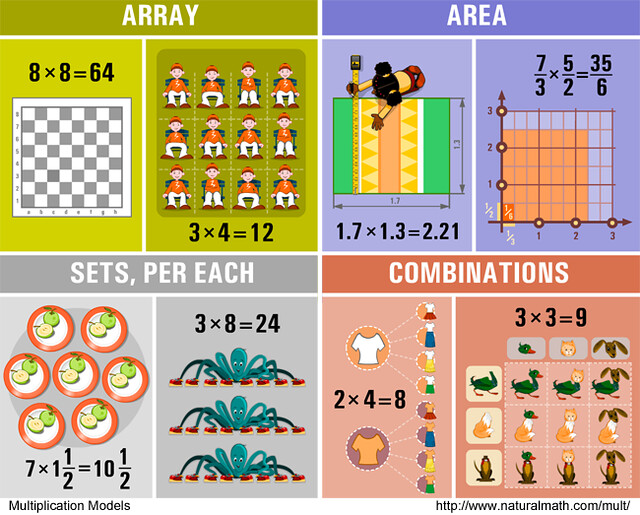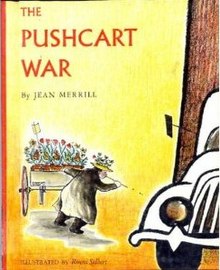Conflict of interest statement: I do not have a current or pending financial relationship with Art of Problem Solving, but I have several friends on their board and have had direct contact with several other people there. We purchased and currently own all of the books I review below.
I have no relationship with Dreambox. We tested the program using their free trial and then paid for a 6 month subscription.
Beast Academy
What is it?
Beast Academy (from Art of Problem Solving) is a book series with 10 "guidebooks" and 10 parallel "practice" books targeted to 3rd, 4th, and fifth graders. Note that the first of 4 books for fifth grade has only recently come out and they are planning to extend to 16 x 2 books covering 2nd to 5th. We do not have either 5A or 5B yet.
We have read all 8 books from 3a to 4d; J1 and J2 have gone through practice books 3A - 3C.
While these are not math exercise apps, I'm going to borrow some of the elements I've used in past app reviews. One key point I want to emphasize for both books and apps:
the way you use them can also determine their benefits or costs.
TZB3
To drive this point home, let's start with Tracy Zager's Big Three criteria (see
here):
1. No time pressure: Neutral since this is really up to you, parents.
Do you set a timer when they start a page of practice or a question? Do you require a certain amount of time spent on math practice? While the books do not suggest or impose a sense of time pressure, there are story segments involving math competitions that imply speed is important.
One time element that is and has always been great about physical books is that they sit around. This means they are available and tempting. Almost every day, there will be someone flipping open one of the BA guidebooks, even J3 for whom the material is too advanced right now.
2. Conceptual basis: yes (pass)
The books introduce models, contexts, and conceptual ways of considering problems and techniques.
3. How are mistakes handled: again, this depends on you and your kids
My approach is to go through the problems and select ones to discuss. I don't use the answer key, so I do the problems myself. This means we have three categories of questions to discuss (a) answered correctly and I found interesting, (b) answered incorrectly, (c) answered correctly by the kid, but I made a mistake.
Also, I am very positive in how I talk about mistakes. The key message is that these are actually the best learning opportunities and create a chance for us to understand our own thinking.
Preliminary summary: whether Beast Academy (or any printed material) passes the thresholds depends on how you plan to use it. If you want to deviate from Tracy's guidelines, either adding time pressure or incentives based on minimizing mistakes, you probably should think carefully about whether that's wise.
The good
For my kids, the stories and themes in the guidebooks hit the right tone. They are engaging and funny, with a humor that is occasionally silly or corny. An extended quote from
The Princess Bride certainly wins some extra points as well. More bonus points for becoming, via malapropism, the source of J3's current catch-phrase, "I get it: pointillism!"
For me, the organizing theme of the material seems to be "ideas you encounter when playing with math." In some cases, the exercises create "aha moments," like when J1 realized he didn't always have to calculate side lengths of a polygon to use his knowledge of its perimeter in a challenge. In other cases, like calculating (n+1) x (n-1) there are interesting patterns to notice and connections to make.
I'd note that the workbooks are absolutely essential as there is a lot of material that is introduced in the context of exercises. I think these books are excellent, well selected, well sequenced, with enough repetition to facilitate mastery and enough variation to avoid boredom. In fact, I really enjoy doing the problems myself.
Overall, we find the practice books an especially good source of cues for quick (5-15 minute) math conversations.
The Bad
Any worksheet-based system is weak in generating exploration and deeper investigation. Beast Academy partially addresses this by including open-ended games and an occasional investigation. While nice, this point remains a weakness. I don't want to belabor this point, since it is not a unique problem with Beast Academy. Indeed, I think it is a universal issue with static educational material.
Unfortunately, the only solution I know is to involve a human guide. Fortunately, I am able to play that role, asking their thoughts about interesting problems, helping them form connections with earlier or other material, getting them to follow useful side-branches or to continue more deeply into a particular area.
Eventually, of course, we hope to develop enough mathematical habits of mind that the kids will do these things on their own. Realistically, I don't think that will happen until they are well clear of any elementary age material!
The Ugly
I don't see any fatal flaws in Beast Academy.
Grand Summary
If you can use the material the way we do, I highly recommend Beast Academy.
If you can't or don't feel comfortable engaging as your kids' mathematical guide, these books are probably still one of the best options. Just don't set up a timer and demand perfect answers to all the questions!
Dreambox
Dreambox is a math facts, basic skills system. It has material from pre-school through high school. We have spent a lot of time with the elementary grade material and a little sampling of the high school content.
TZB3
Dreambox was one of Tracy Zager's positive examples in her app post, so we already expected it would pass these three criteria. After spending so much time with the system, though, we've seen that not all activities within DreamBox completely satisfy the checklist:
1. No time pressure
Some activities do include time pressure. For example, there are a family of "games" around multiplication automaticity where a collection of calculations stream across the screen. This really does raise the stress level for kids.
In a slightly different form, there are other activities involving virtual manipulatives that require the student to do something using the minimum number of moves. Like the time pressure, this seems to create confusion where the kids can get something right, but still get it wrong.
2. Conceptual Basis
I mostly concur with Tracy's original assessment. Almost all activities have a conceptual component. The timed calculations mentioned above don't, so those get a double demerit.
3. How errors are handled
Again, mostly agree with Tracy. However, there are some activities where, for a minor mistake, one is required to redo a number of manipulations, rather than fix the earlier work.
The good
The underlying math curriculum here is solid, if basic. The clear strength of this system is the pictorial representation of manipulatives offering models that build number sense, reflect operations, and show place value. In the early years section, where we have been spending most of our time, almost every activity is based around one of the manipulatives.
The other thing Dreambox does well is present a sensible progression for the different activity streams. I think this works especially well for J3 who is going through much of the material for the first time. As she encounters a new formulation, she will study it for a while and then there is a clear moment when she has figured out the new complication.
I'll give two examples. For J3, there is an activity to replicate a number bead pattern and then click the number of beads in the arrangement. Her primary tool is to count the beads one-by-one. In the most recent module, she gets a short view of the arrangement and then it is hidden (it can be revealed again, if you choose). This is forcing her to build new skills, either memorizing the arrangement to mentally count or a more advanced counting technique.
For J2, one of the place value exercises involves grouping items into pallets (1000s), cases (100s), boxes (10s) or loose items (1s). The current module asks him to consider multiple different ways to pack a given number. For example, 1385 items could be packed in 1 pallet, 3 cases, 8 boxes, and 5 loose items, or 13 cases and 85 loose items (among many other options).
One other strength of DreamBox is the email feedback to parents. Christopher Danielson recently noted this in a post:
Parent Letters.
The Bad
I have seen three areas of weakness with Dreambox: the way mathematical tasks are presented, the pace of adaptive adjustment, and the absence of rich tasks. I'll talk about each of these in turn.
The theme gives an irritating appearance of choice. For example, in the early elementary section, the kids can play with dinosaurs, pirates, pixies, or animals. Under each of these, they have a further choice about what story to explore. Those choices, at least, lead them to different narratives and animated sequences.
At that point, all of the stories involve finding missing items. Users then see another choice asking where in 6 map regions they want to look for the missing items, but this isn't really a choice as there are no differences between regions and they will have to go through each region eventually.
Similar to Prodigy Game, the math tasks are presented as an annoyance to be overcome, the cost the student has to pay to move on with the story. Again, I find this creates unfortunate subtext to the mathematical experience.
Second, the adaptive adjustment is very slow, if it actually exists. In their FAQ, I see that they get questions about how to increase the challenge level, so this seems to be a common experience. Part of the problem is that they intentionally start students with material below their grade level.
Finally, the tasks in Dreambox are basic. While they may present a challenge for a new learner, as J3 is experiencing, they should eventually become so easy that they are boring. In some way, this feels like learning to solve math class tasks without having to develop or use any mathematical habits of mind. Further, the thrill and fun of playing Dreambox lies in unlocking the animated stories and collecting tokens, not in doing math.
For J1 and J2, this thrill has worn off after about 2 months with the system.
The ugly
Nothing in Dreambox is a show-stopper.
Summary
Properly understood as a basic curriculum substitute or source of practice exercises, Dreambox is a solid application. Just don't make the mistake of thinking it will either foster a love of math nor deeper mental habits.
*Update* A quick comparison with ST Math
I was sitting on this review, partially written, for a long time. One thing that got me to finalize the review was going through the demo challenges on ST Math with J2. We had previously tested ST Math many years ago with J1 and it was really good. Once again, this is what I saw with J2: really cleverly presented scenarios that gave us good models for the math and a really fun user experience. After playing for about 30 minutes, J2 said: "this is a lot more fun than DreamBox."
If I can get a subscription, we'll test it more extensively and write a review to see whether that really holds up.








